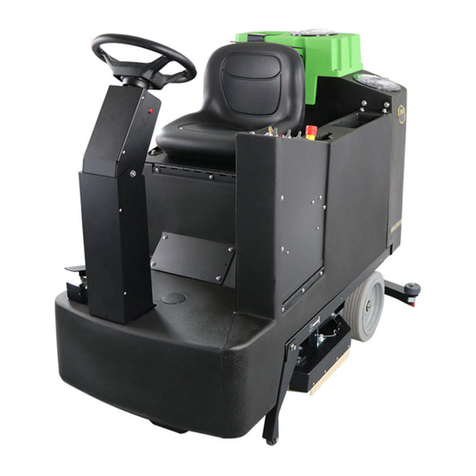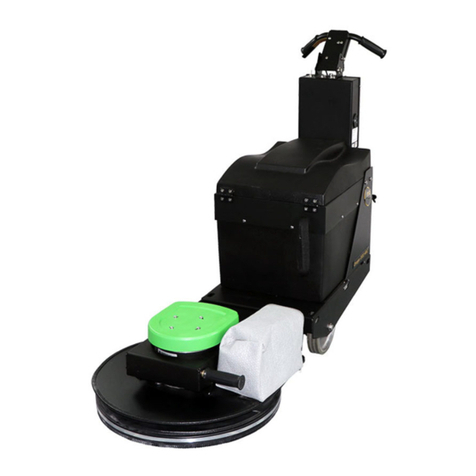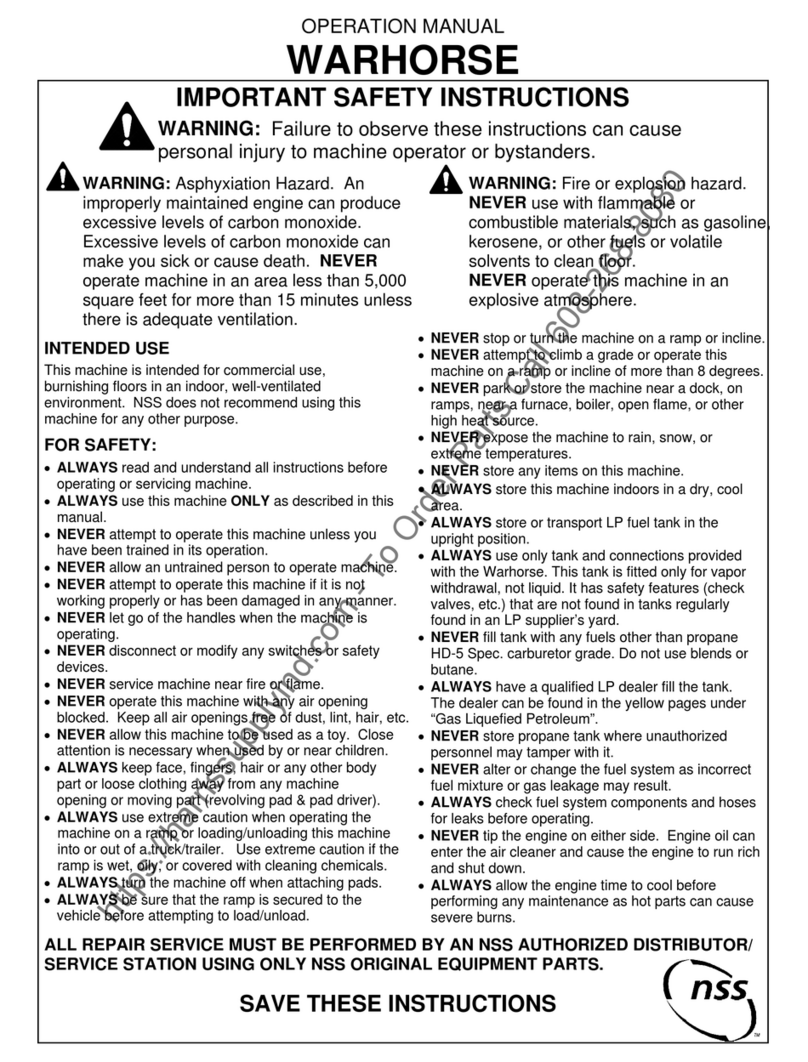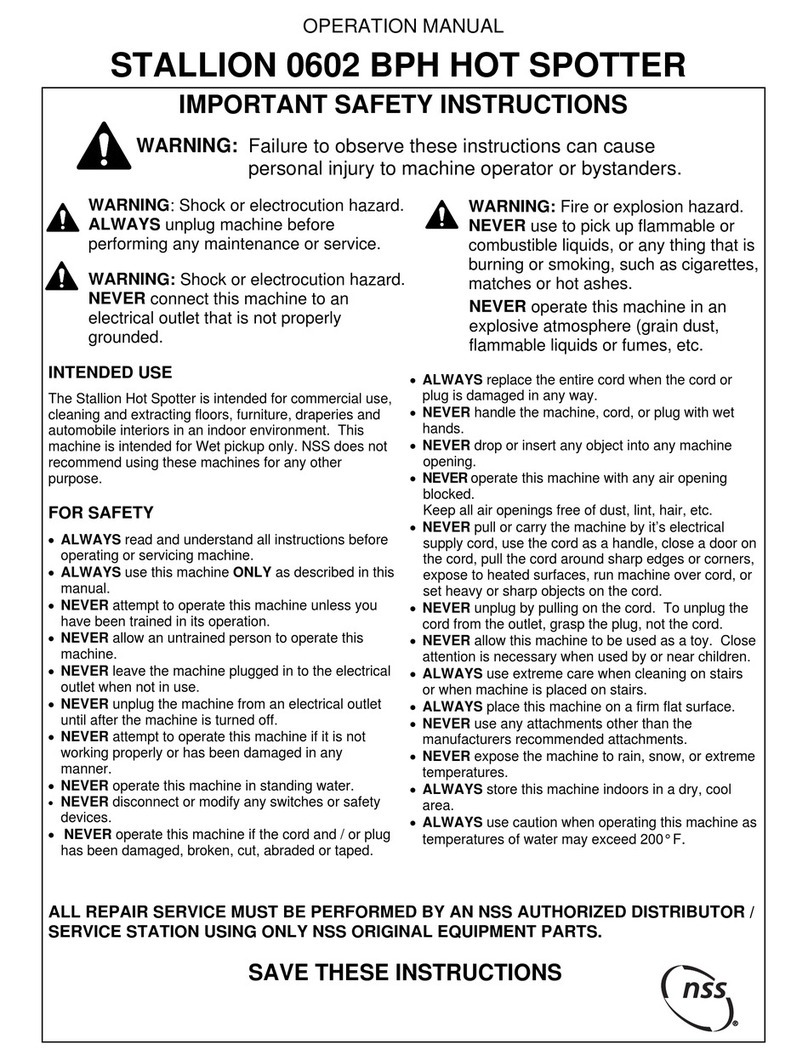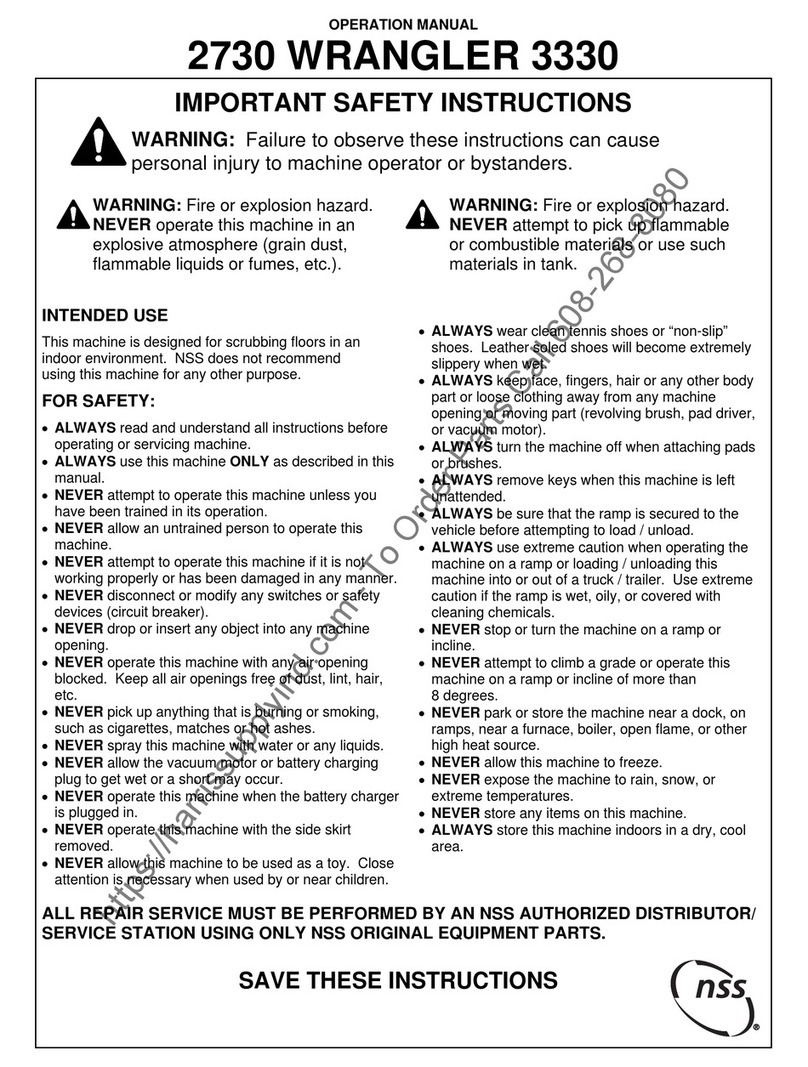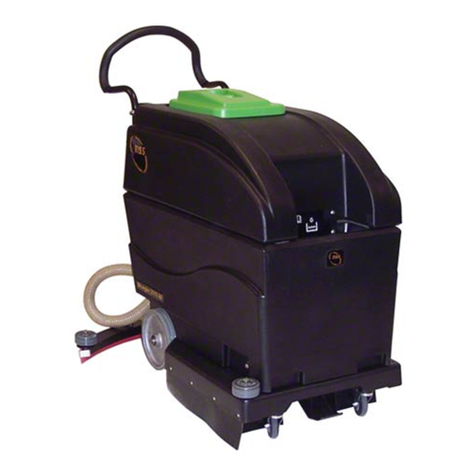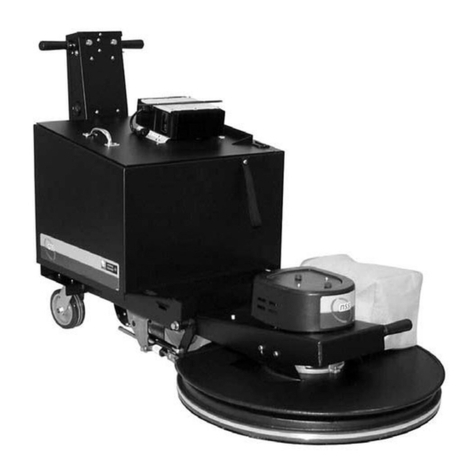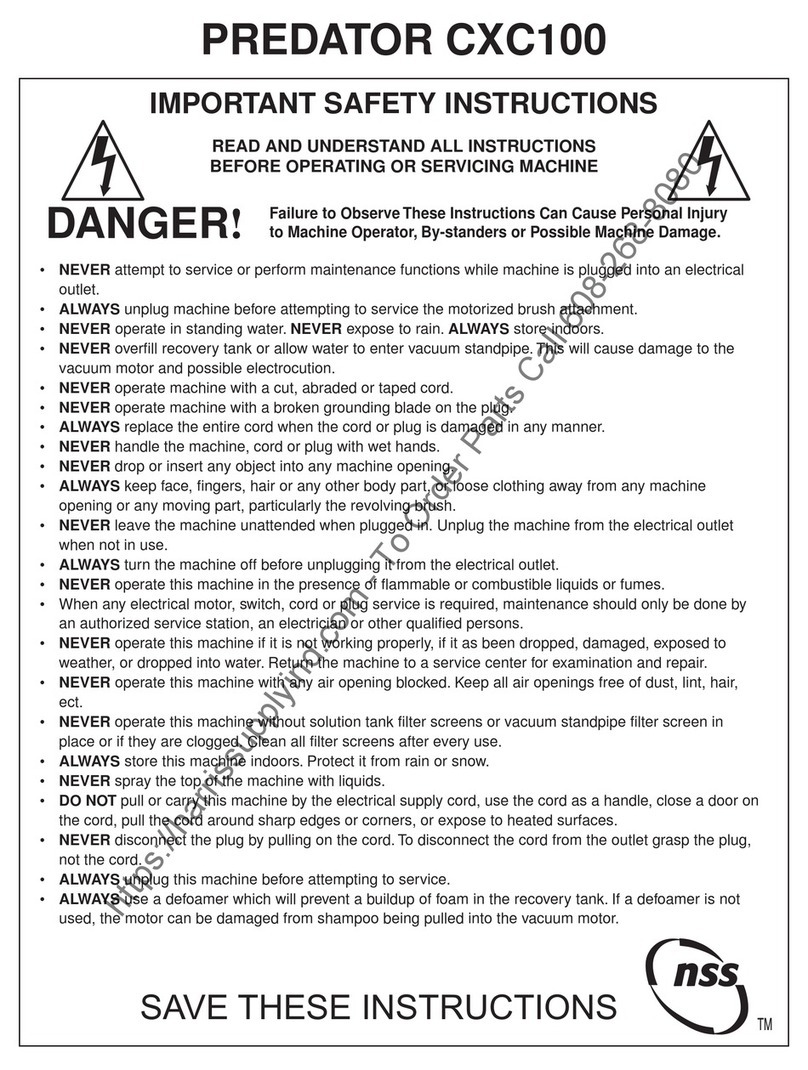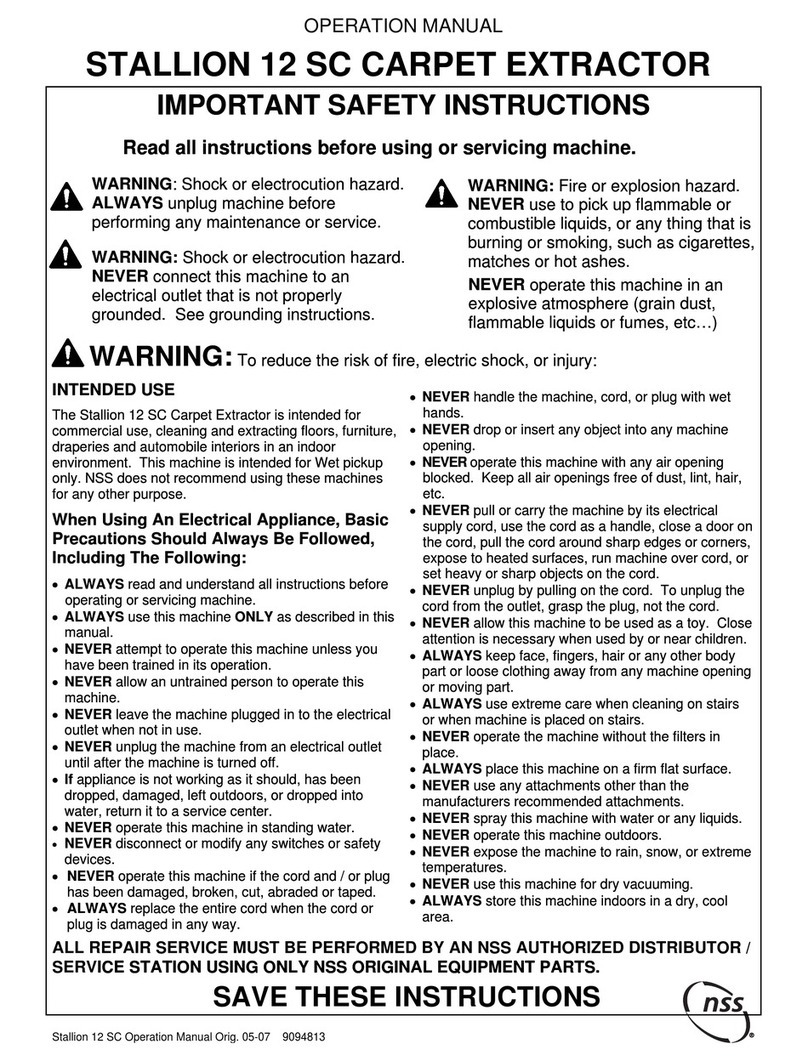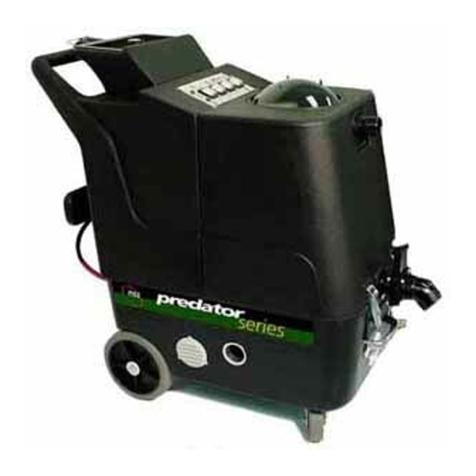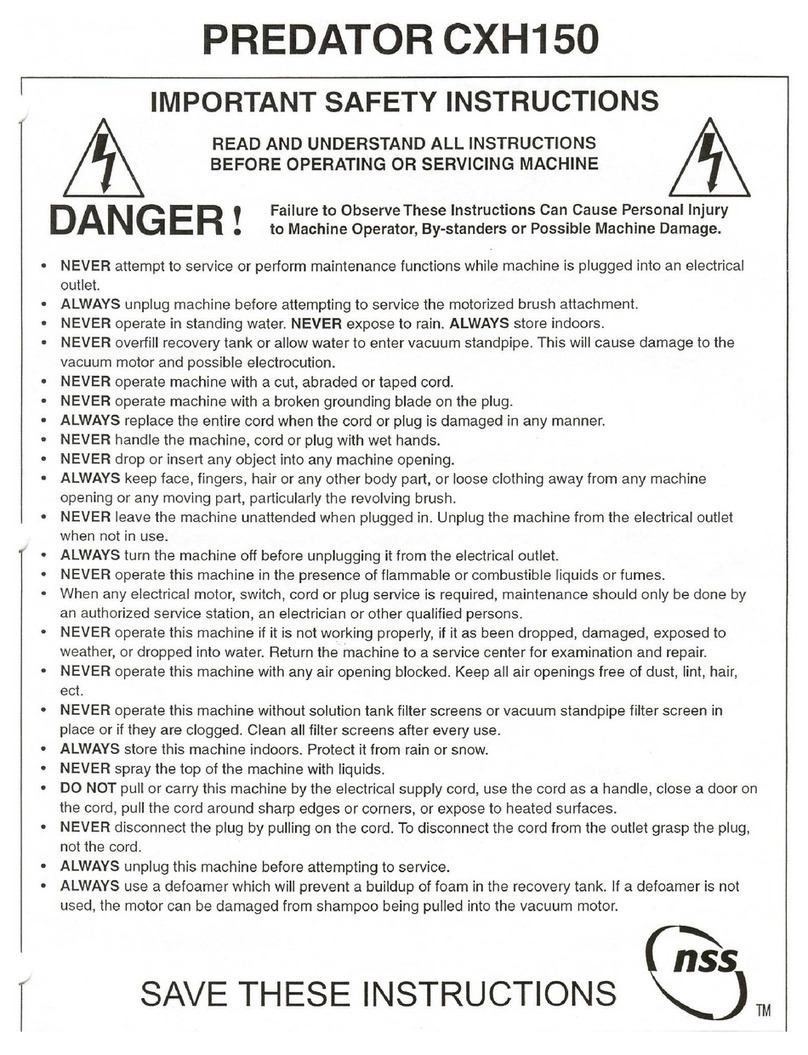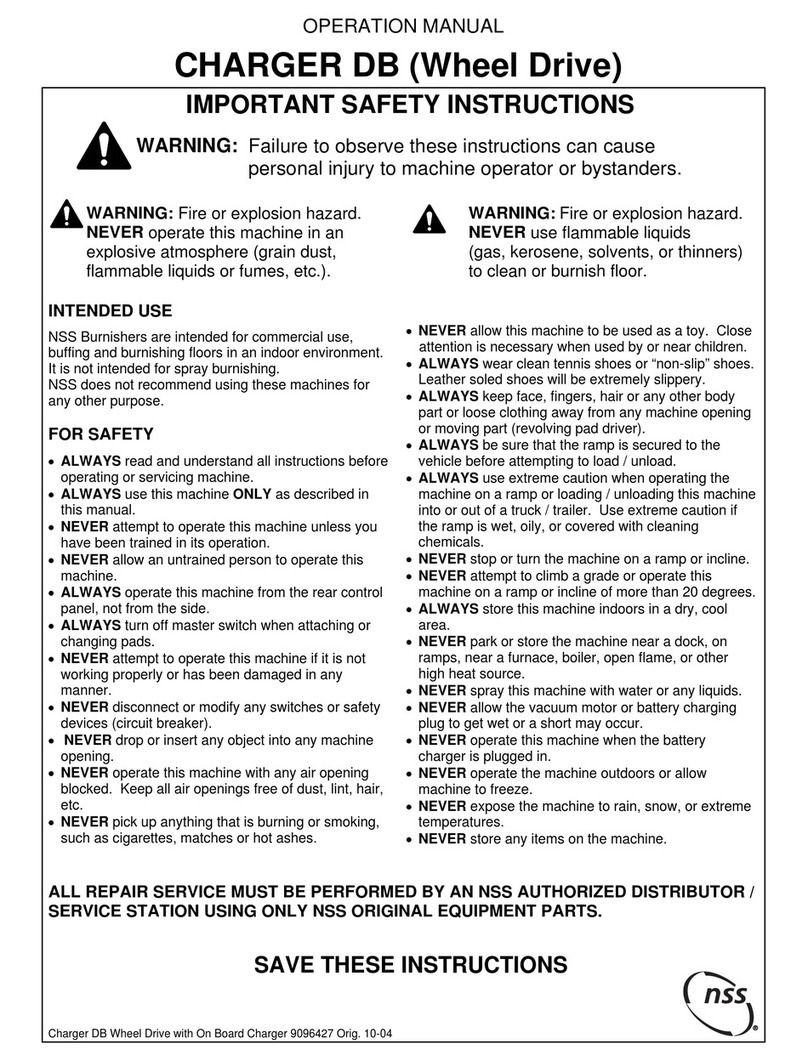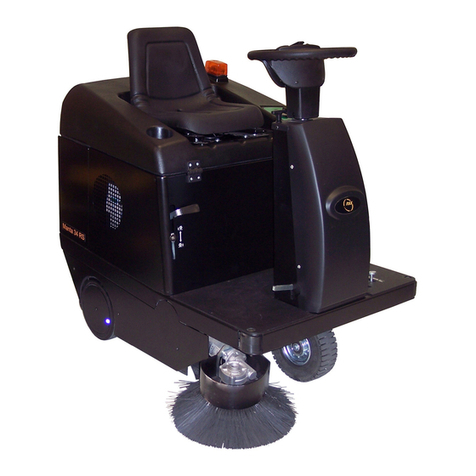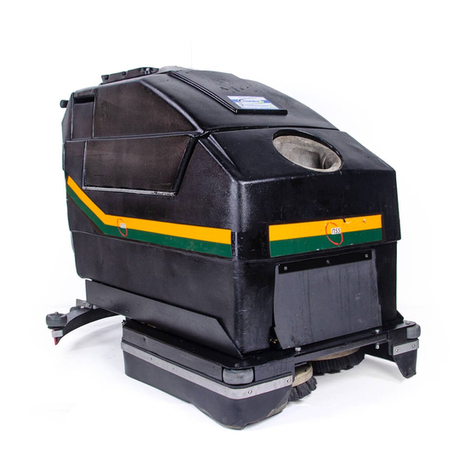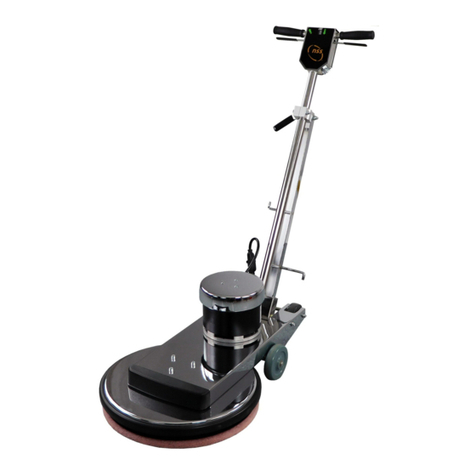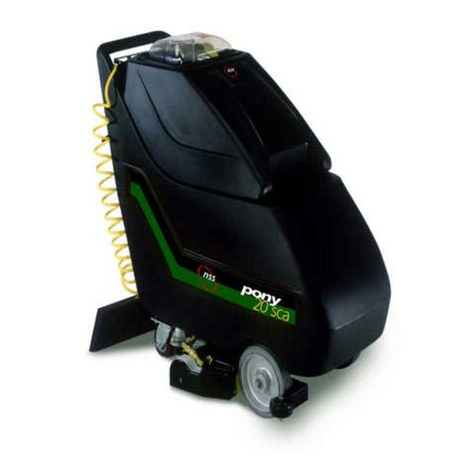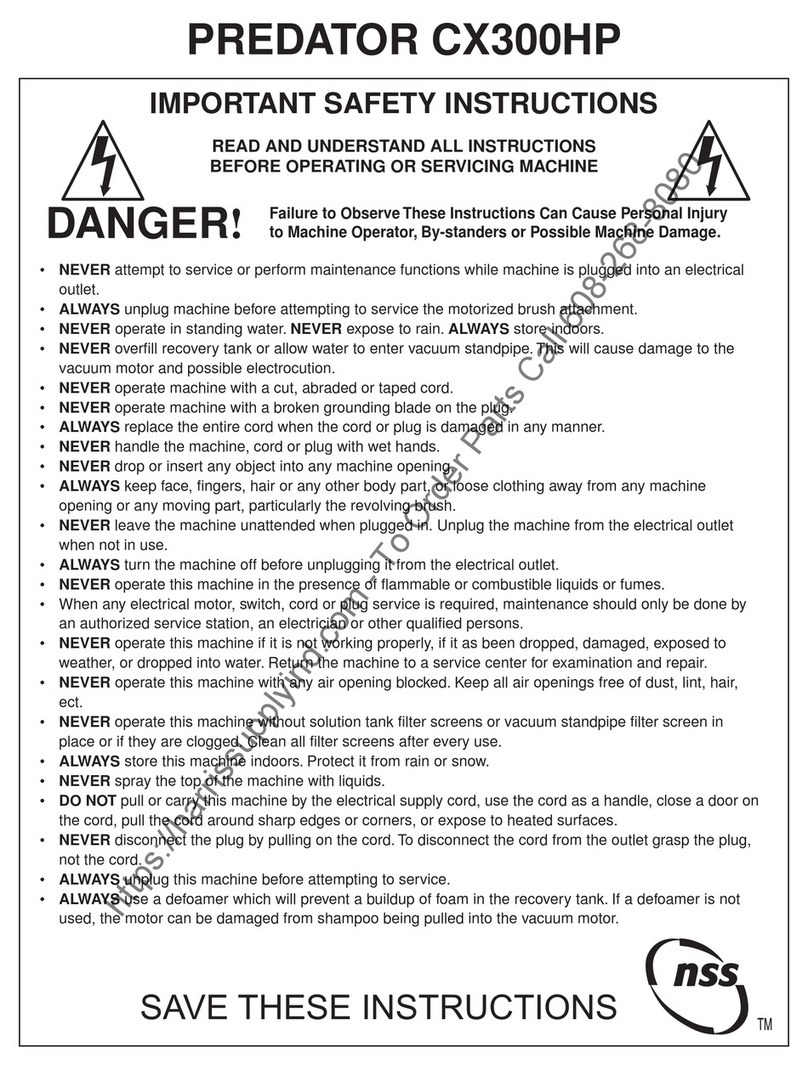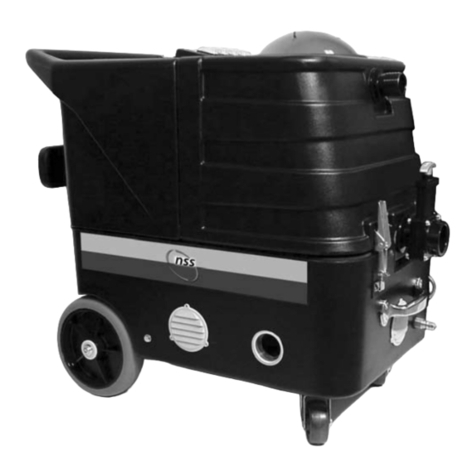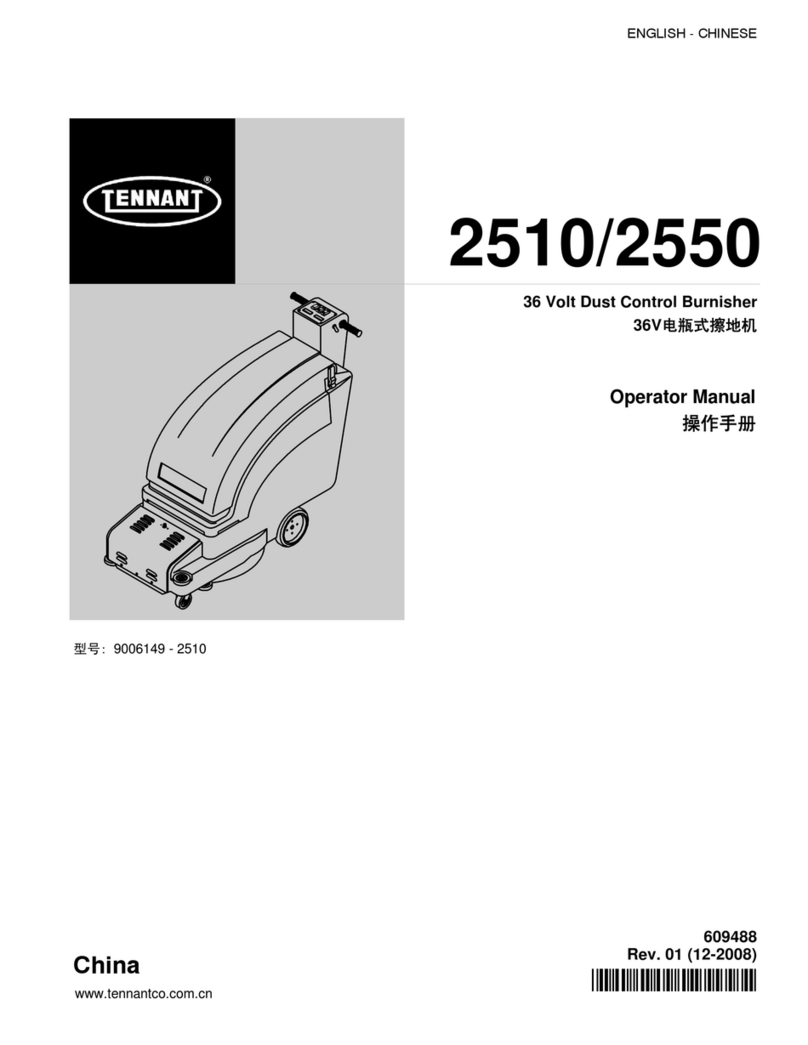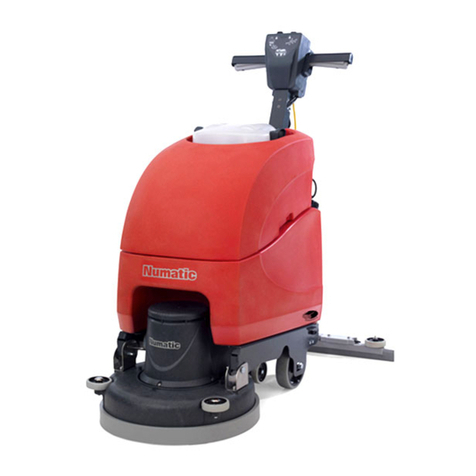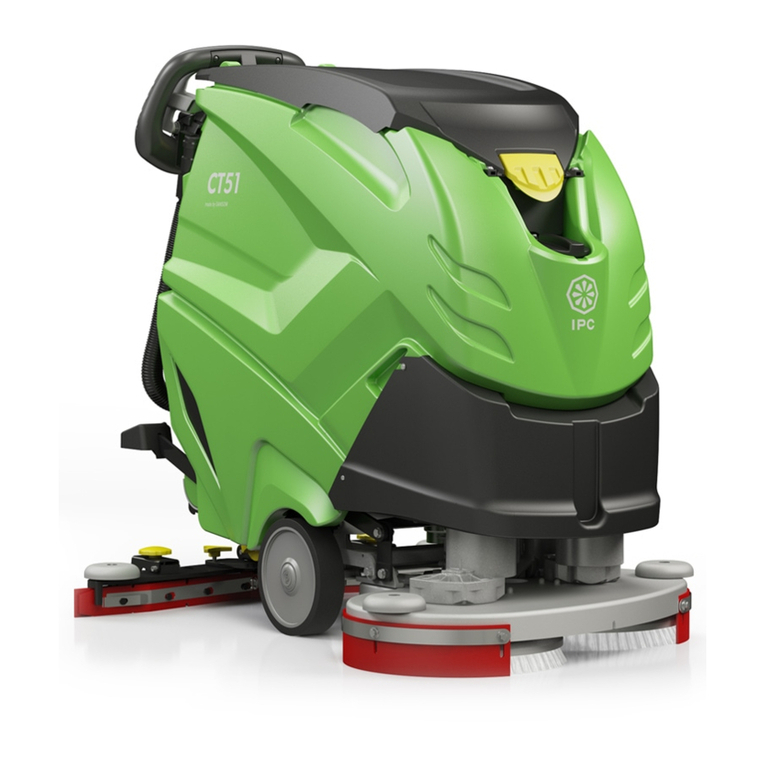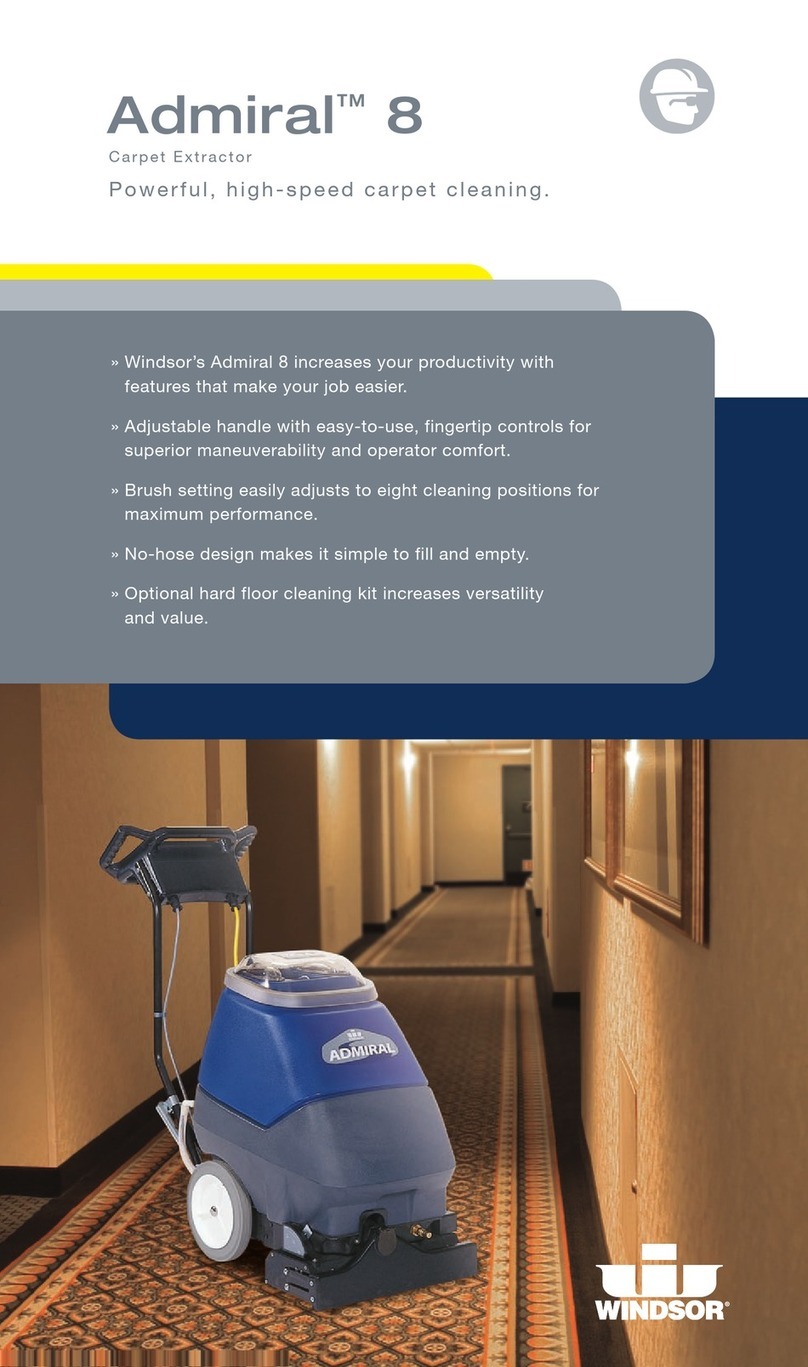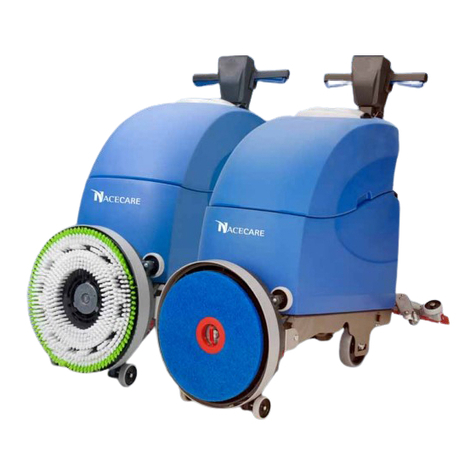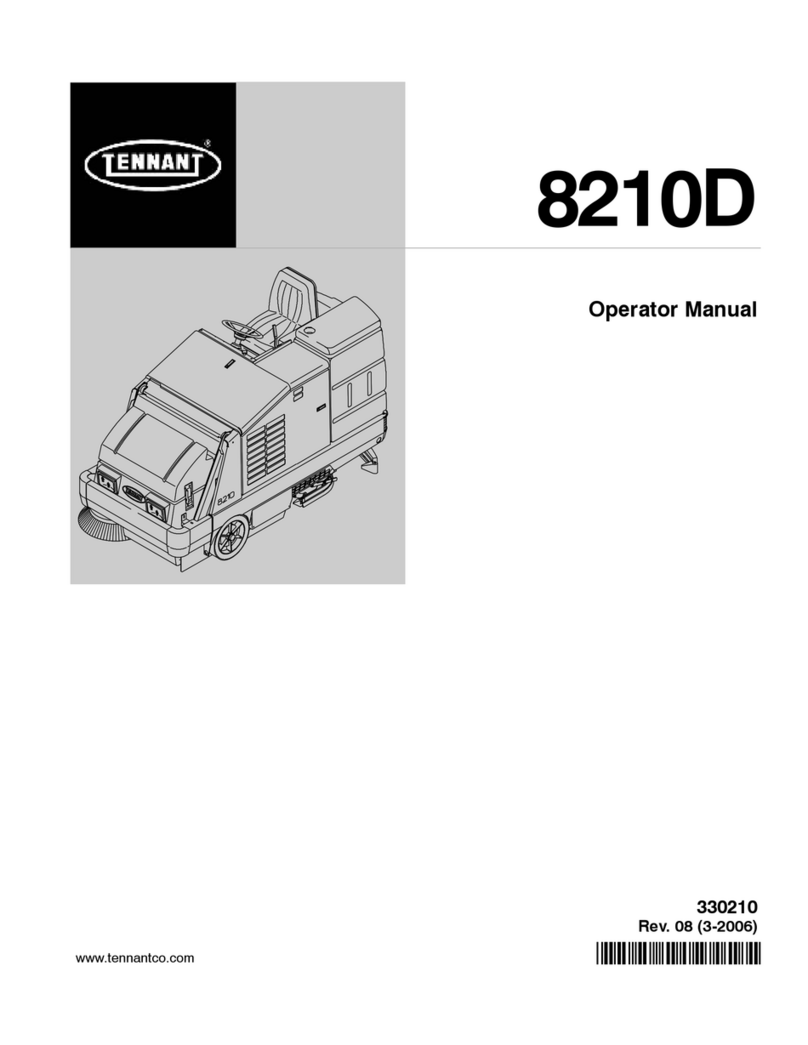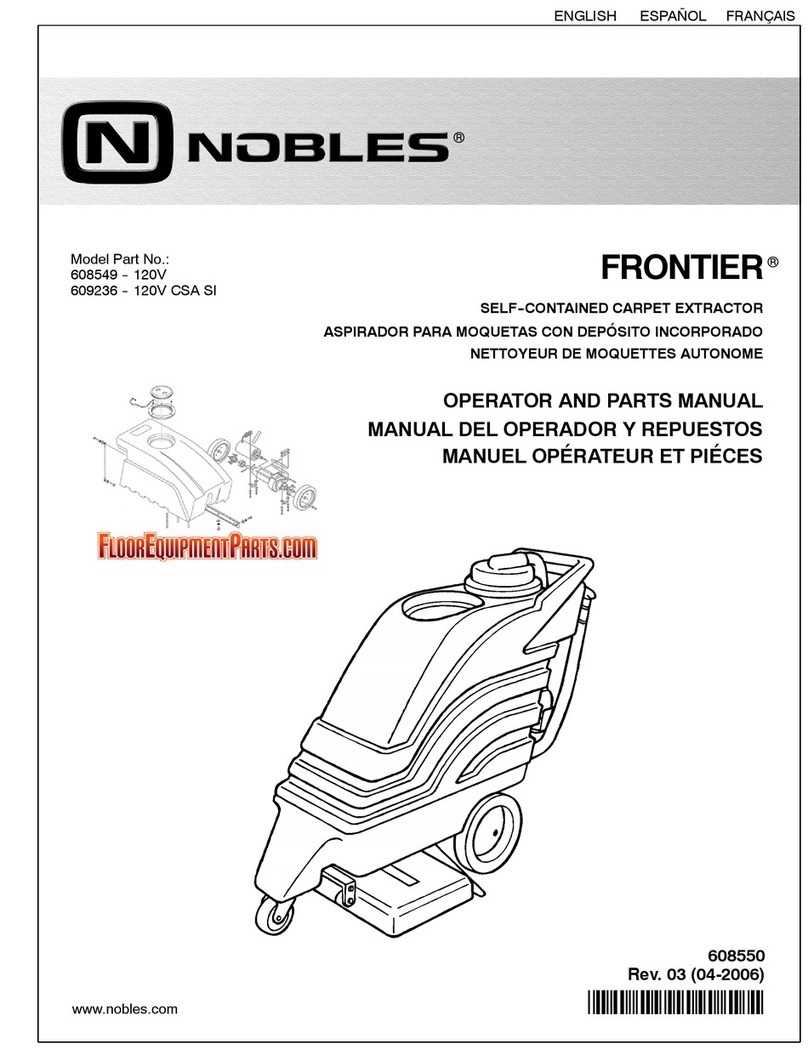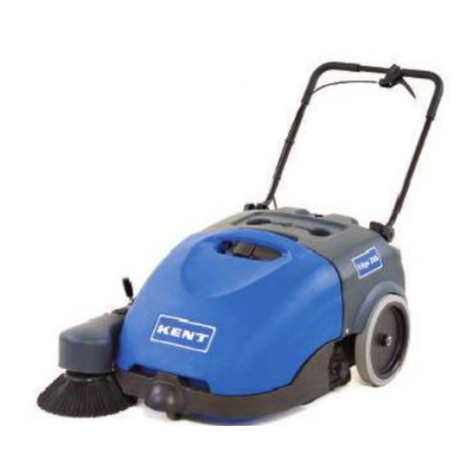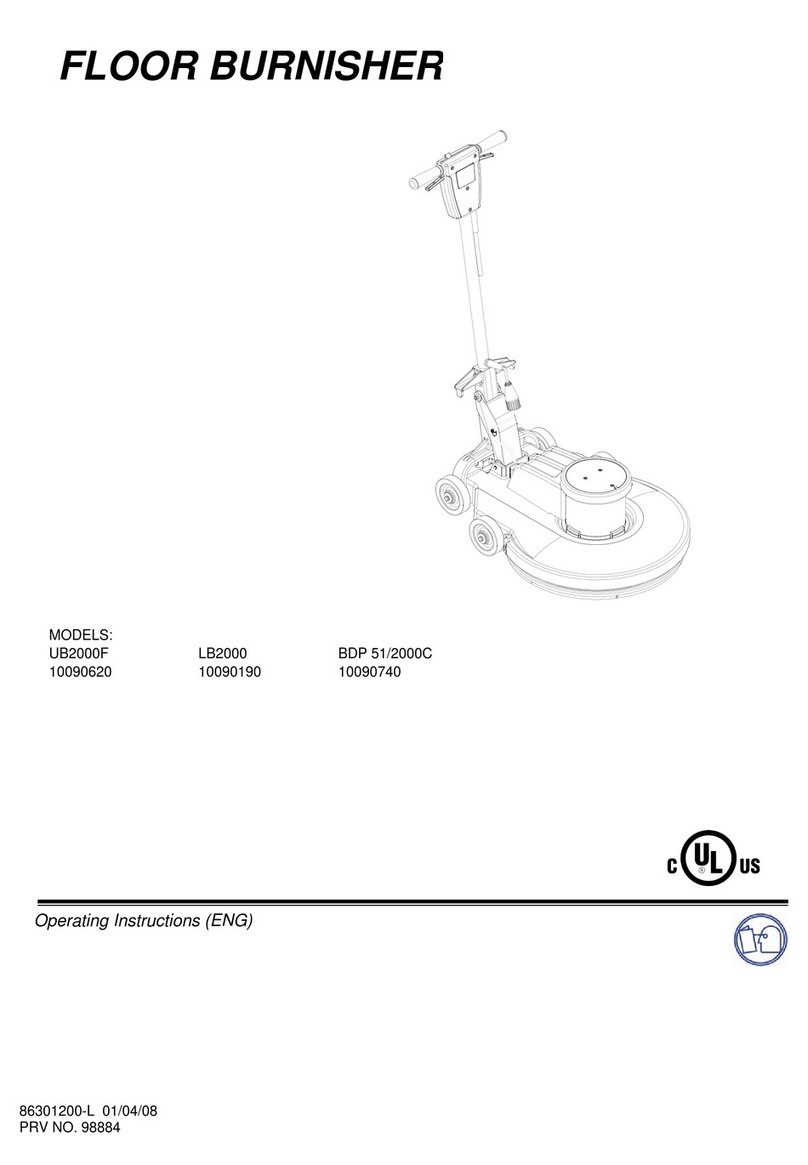
5
•Every time you empty the recovery tank, we
recommend that you add at least 4 to 6 ounces of
defoamer chemical into the recovery tank before
resuming work. Vacuum the defoamer into the
empty recovery tank through the squeegee vac
hose.
•At the end of the day empty all liquids from both
solution and recovery tanks. Rinse both tanks with
clean water to prevent chemical residue build-up,
allow to air - dry to prevent odors.
•Remove any residue from screen and float ball to
ensure proper operation. Replace float assembly
in recovery tank.
•Check clear lid for airtight seal.
•Check the drain hose for damage and / or
restriction, to access the hose, remove the clean
out cap from inside the Recovery tank, replace the
cap before using the machine.
Battery Charging
•The master power switch and all other switches
must be turned OFF.
•Recharge the batteries at the end of every shift or
when indicated by the battery meter. Read the
battery meter while the machine is in use.
*115 AH batteries require 9-12 hours to fully
charge.
NOTE: If battery charger is unplugged before the
charging cycle is completed, it may take up to five
minutes before the machine to be able to be turned
on.
•Consult your local authorized NSS distributor or
service center for assistance.
Battery Electrolyte (Liquid) Level
Inspect the electrolyte level of at least one cell in
each battery before daily charging. The liquid must
be visible above the internal plates. Do not charge
the batteries if the liquid is below the plates.
•Add only water to the cell of a battery to adjust the
liquid level. Distilled water preferred, Do Not use
well water. Before charging, add only enough
water to cover the top of the internal plates. After
charging add only enough water to bring the level
to the bottom of the fill tube.
•Do not overfill the battery liquid level, this will
cause electrolyte (acid) spill. Spilled electrolyte
(acid) can cause machine damage and personal
injury. Clean up and dispose of all spills
immediately.
•Every cell of every battery must be checked and
replenished once per week.
•See the battery-warning sheet (page 2) for more
details.
Pad Drivers or Brushes
•Remove either pad drivers or brushes from
machine after use.
•Rinse with clean water to prevent chemical residue
build-up.
•Allow to air-dry, on a peg or upside down on a
shelf.
•Inspect for wear or damage. Repair or replace as
needed.
Squeegee Assembly
•Remove squeegee assembly from machine.
•Rinse with clean water to prevent chemical residue
build-up.
•Allow to air dry, it can be stored on top of the
machine for drying.
•Inspect the squeegee assembly, linkage, and
vacuum hose, for wear, damage or obstruction.
Repair or replace as needed.
•Remove debris from squeegee hose and entrance
to recovery tank.
Weekly Maintenance (20 Hours)
•Verify all daily maintenance has been performed.
•Inspect all battery liquid levels. Adjust to proper
level as needed. Add only water
•Check all battery terminal and cable connections.
Tighten as needed. Loose connections are
dangerous and can cause personal injury and
machine damage.
•Clean any corrosion from battery terminals and
cables.
•Drain all liquids from battery compartment.
Dispose of according to local EPA regulations.
•Check solution flow to pad drivers / brushes. Flush
clean solution tank and hoses with a mixture of 8
oz. (250ml.) white vinegar to one-gallon (4 liter)
warm water.
•Repair or replace any worn or damaged
components as needed.
****CAUTION****
Inspect and replenish battery water in every cell in
every battery weekly. Failure to maintain proper
electrolyte level in every cell of every battery will
cause premature battery failure, and void the
warrantee.
Monthly Maintenance (100 Hours)
•Verify all daily and weekly maintenance has been
performed.
•Lubricate the axle bearings of the two large 8”
(20cm) wheels. Use high-grade water-resistant
grease.
•Lubricate the caster with moisture resistant
foaming-type spray.
Mandatory Periodic Maintenance
It is important for you to read the hour meter for hours
used in order to perform this machine maintenance.
It is mandatory that the following maintenance
procedure be performed at the described interval..
Failure to perform this procedure may result in poor
machine performance, machine component damage
and failure. This procedure should be performed by
an NSS authorized distributor or service center.
Repairs performed by an unauthorized company will
void the machine warranty. If you require assistance
finding an authorized service center, please contact
NSS Enterprises, Inc.
https://harrissupplyind.com-ToOrderPartsCall608-268-8080
